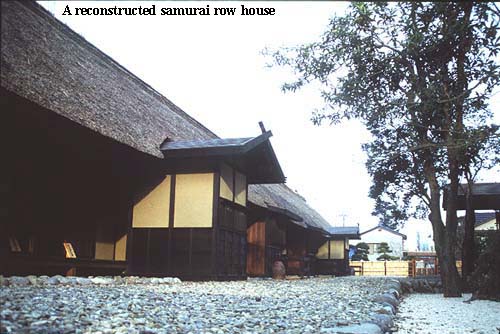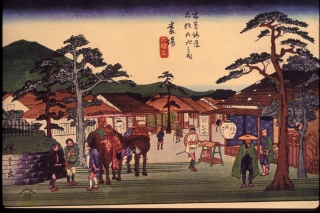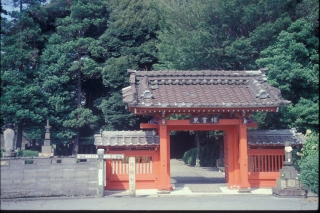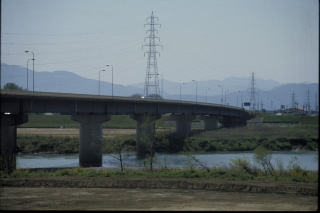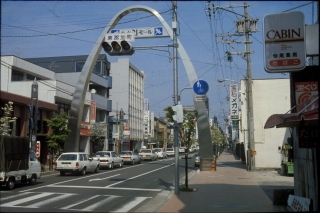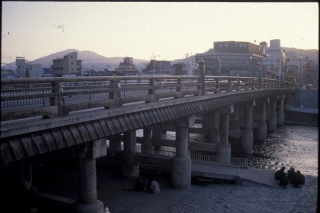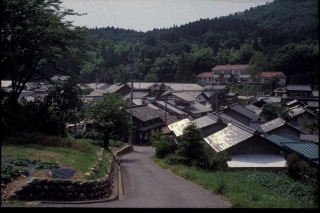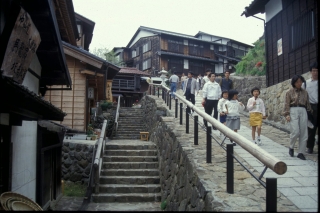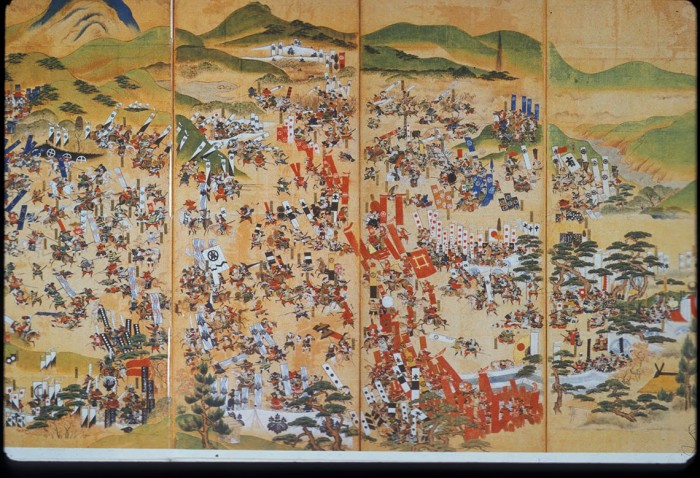
In contrast to many larger castle towns such as Hikone or Takasaki relatively little survives in Annaka today to suggest that this place was also the castle town of a daimyo in the Edo period. In part this is due to the small size of Annaka. By the time of the Meiji Restoration in 1868 the wealth of this domain was assessed at only 30,000 koku, compared to 82,000 koku for neighboring Takasaki and 340,000 koku for Hikone. Even the value of the Hikone estates seems small in comparison to the Maeda family domains at Kanazawa, which amounted to 1,027,000 koku – the largest in the land for any daimyo.
The status of Annaka is further confused by the fact that there was never a castle keep, nor any moats or imposing castle walls to defend the daimyo’s residence. He lived instead in what is best described as a fortified mansion atop the small hill which overlooks the Nakasendo, about a hundred yards from the center of the post-town. Despite its apparent lowly status, Annaka was considered a strategically important castle town by the shogunate. The daimyo entrusted with this domain were always chosen with great care, and were always drawn from the ranks of the fudai families — considered the most loyal to the shogun since they had fought with Tokugawa Ieyasu at the Battle of Sekigahara.
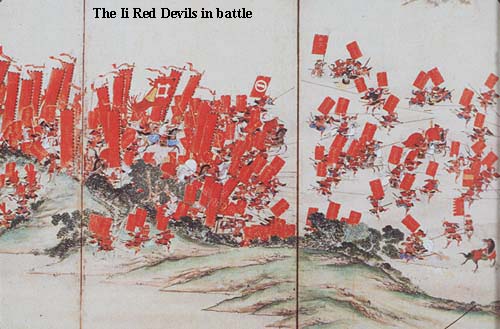
Annaka had been the site of a small castle in the Warring States period but was not awarded to any daimyo by the Tokugawa shoguns until after the siege of Osaka castle in 1615. Then it was given to Ii Naotsugu as a ‘punishment’ for not having led his ‘Red Devil’ troops at the siege of Osaka. This was despite the fact that Naotsugu had been ill at the time, that he was the eldest son of the hero Ii Naomasa, and that he had seen through the building of Hikone castle to the stage of near completion. Such moves were not uncommon, however, and Naotsugu appreciated as well as anyone else that the shogun had complete authority over even his most loyal retainer. It must have seemed somewhat ironic though, for nearby Takasaki had been his father’s domain before the Battle of Sekigahara. It may have been this fact which encouraged his mother to move with him to Annaka, eventually to be buried in the temple graveyard there along with Naotsugu’s wife.
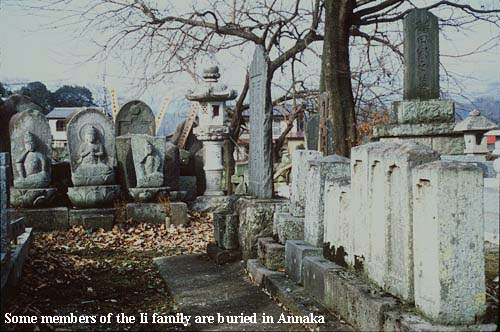
The main reason that Annaka was not more strongly fortified was that all new castle building projects were banned after the siege of Osaka by the shogun Hidetada. In the same edict, many smaller castles were actually ordered demolished. Because of Annaka’s strategic importance, however, it was allowed to maintain castle town status and a daimyo, Naotsugu, was installed there. In this sense Annaka is typical of many smaller castle towns throughout the country which were established, or reoccupied, after 1615 and which do not have genuine castle fortifications.
The strategic importance of Annaka was due to its location on the Nakasendo and its proximity to the great barrier station at Usui. In effect, Annaka was at the point where a major highway broke through the mountain chain surrounding the Kanto plain with, at its center, the shogun’s citadel of Edo. As such, Annaka was the very first line of defense against possible attack on Edo from this westerly direction. Enemies of the shogun would be held up sufficiently at Annaka, it was hoped, for defenders at the stronger castle of Takasaki, some three miles away, to prepare a major defensive action. It made sense, therefore, that the daimyo of Annaka was also given the responsibility of providing soldiers to man the barrier station at Usui.

great barrier station at Usui
Common practice in the Edo period was for castle towns to change from control of one family to another, usually after the death of the previous daimyo. This was a means to prevent neighboring daimyo families becoming too intimate (and so posing a threat to the shogun), and also to facilitate promotion and demotion when appropriate. For these reasons control of Annaka passed through the hands of five daimyo families between 1615 and 1868, although one of them assumed control twice in this period. In each case, except Ii Naotsugu, the daimyo was promoted from the junior branch of a major fudai family, and often Annaka proved to be a stepping-stone for further promotion. Ii Naotsugu’s descendants were not so fortunate, however, ending up with an even smaller domain on the Japan Sea coast by the time of the Meiji Restoration.
A modern school now stands on the site of the ‘castle’ at Annaka, and a Christian church has been built on the site of the gateway which led down the hill to the Nakasendo. This is one of the more unusual changes in land use seen in castle sites today. The former pattern of narrow, dog-legged streets which surrounded the castle does survive, but even more remarkably a few of the thatched roof, Edo period samurai houses also remain. Particularly interesting is a row of low-ranking samurai quarters (nagaya) which were renovated in 1992 and opened to the public. These form one of the very few surviving examples of this kind anywhere in Japan.
